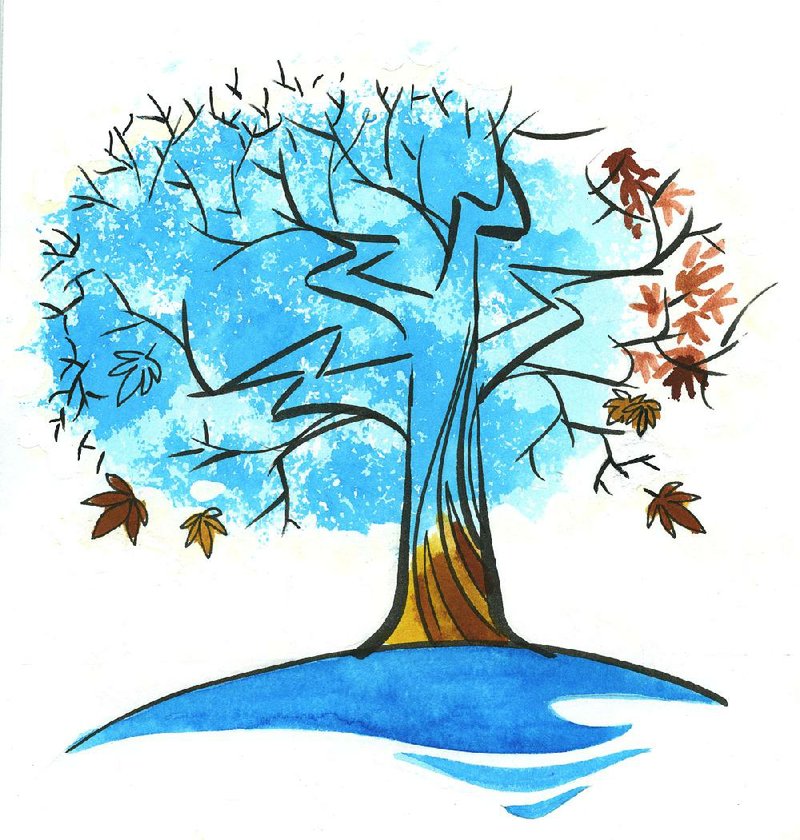Q Could the hard freeze in early November have killed my huge Japanese maple? The leaves generally turn brilliant red but this year shriveled brown and still have not fallen. So worried.
A I do not think your tree was damaged (at least by this freeze), but the early freeze hit before the Japanese maple had completed its life cycle, which would lead it to drop leaves. You missed their potential fall color, too. I have one that did the same thing this year and last year. Many Japanese maples retained their foliage last year until the new growth pushed off the remaining leaves. Deciduous plants form an abscission layer that causes their leaves to fall off. If we have an early freeze, the abscission layer doesn't get finished, and leaves remain on unless wind knocks them off. We saw a lot of our deciduous plants with messy, dead leaves on them after our early freeze. Wait for spring, and keep your fingers crossed that we don't have a wild and woolly winter.
Q I dug up lots of iris bulbs and need to know if I can plant them now or should store them and wait for spring. How do I store?
A In a perfect world, all iris rhizomes would have been planted six to eight weeks before a killing frost, to get a root system started. Since bearded irises are planted half in the ground and half out, without an anchoring root system, they sometimes will be heaved out of the soil with freezing and thawing temperatures and so can be damaged in extreme cold. To store them -- right now -- sort all the rhizomes and inspect them for any soft spots or damage. Discard any that are questionable. Make sure the rhizomes are relatively dry and old soil's shaken off. Some people like to dust them in a sulfur mix to help prevent disease. You can get a large cardboard box and place them in shredded paper, dry peat moss or similar material. Keep them in an unheated garage until spring. Don't crowd them together or use plastic, as they can rot. Plant as soon as you can in the spring. Iris rhizomes are tough and will usually bounce back once planted.
Q Can you please tell me what causes the white oak trees to be scaly looking and their leaves sickly looking? Also, we have five white oaks on our property that were invaded by something (we thought aphids) that caused snowlike particles and also sticky residue to cover everything near the trees. The trees look sickly. They have dropped their leaves and billions of acorns. What gives?
A My guess would be aphids, but maybe some spider mites, too. Dry weather late in the season tends to encourage larger populations as rain can often clear the insects off the leaves. The sticky residue you mention is honeydew droppings from the aphids. White woolly aphids can also look almost like snow falling. The sticky substance can cover car windshields, patio furniture and even plants beneath the tree. If left for long, a black sooty mold forms on the honeydew. Aphids suck sap out of the leaves and spider mites also withdraw fluids and leave a chlorotic-looking, yellowish leaf. I would not be concerned with either problem as long as it happens late in the season. If you had damage very early and year after year, it could hurt the overall health of the tree. Late in the season, the leaves have pretty much completed their job and the tree's health will not be compromised. Since your trees have good acorn production, it sounds as if they are healthy.
Q When is the best time to cut back a wisteria? We planted ours nine years ago when we first moved to Arkansas, and it is almost bigger and heavier than the trellis that supports it. We want to reroute it.
A Don't touch it now, since flower buds are set for blooms next spring. The time to prune wisteria is right after flowering in the spring, or if yours is not old enough to bloom, after it begins to start leafing out. Heavy pruning is recommended annually to keep it in bounds and prevent it from spreading aggressively.
Janet B. Carson is a horticulture specialist for the University of Arkansas Cooperative Extension Service. Write to her at 2301 S. University Ave., Little Rock, Ark. 72204 or email her at
jcarson@arkansasonline.com
HomeStyle on 12/13/2014
